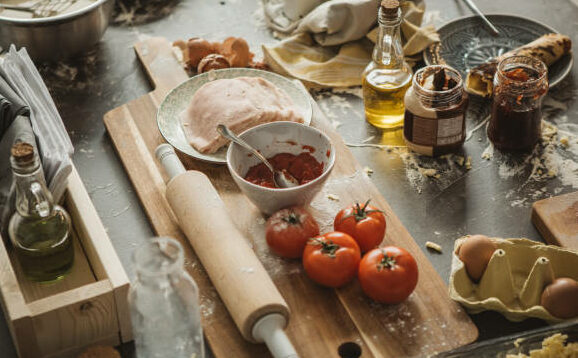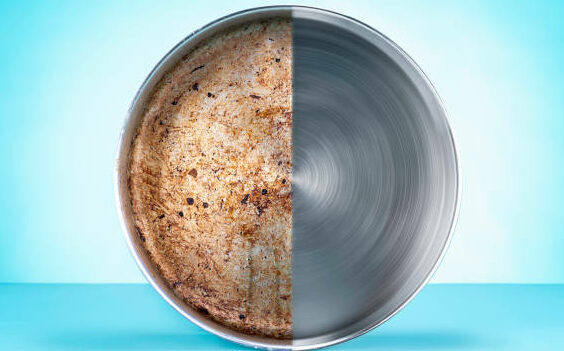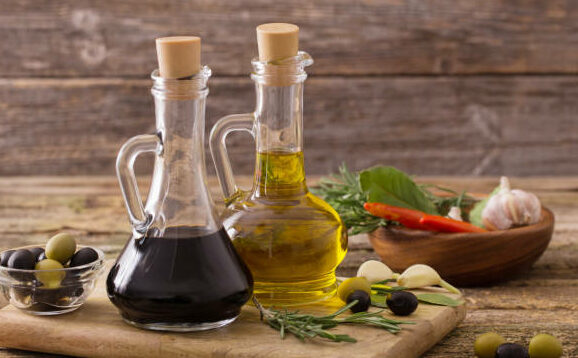The dust and cooking grease on the outside of kitchen cabinets cause deposits to build up. If you add heat, you can make a coating that sticks well. Most of this will not happen if you mop every day. If you haven’t cleaned your cabinets in a while, this buildup may have become thick and hard to remove. This is what we all try to avoid when we clean every day or every week.
You have to do it often. Even though this part of the cabinets is more likely to stay clean for longer, dust, dirt, and other things still end up there. Small pieces of food or crumbs pile up quickly and attract bugs. Every three months, clean your cabinets to keep them clean and stop them from getting dirty. Even cabinets where food is kept should be cleaned often. During these cleanings, you can also put things in order, throw out old food, and move dishes that are in the wrong place.

Table of Contents
How do I clean the inside of the cabinets?
Warm water on a cleaning cloth is all you need to clean the inside of a cabinet. You don’t have to soak the cloth; you can just make it damp. Before wiping the doors, top, sides, and finally the bottom of the cabinet, wring the cloth out well. Taking out different things as you clean makes it easier. You can use a degreaser or dishwasher detergent to clean the cabinets more thoroughly if they need it.
How Do I Clean Outdoor Cabinets?
If you clean the outside of the cabinets every day, you will have a clean kitchen. A damp cloth (possibly with detergent) should be used to do a light cleaning. If dirt has already built up on your cabinets, try to remove it gently with a degreaser and a sponge. Start with a small, out-of-the-way spot to see how the cleaning method affects the finish. If there are no problems, you can move on to the parts of the cabinets that are more obvious.
If you don’t take care of your kitchen cabinets well, they could last for 20 or 30 years before they break. Then you’ll have to think about getting new ones.
And the cost of replacing kitchen cabinets can make up 60–70% of the total cost of a full kitchen remodel. On average, a full kitchen remodel costs about $24,000 ($150 per square foot). About $14,000 to $17,000 of that $24,000 budget is spent on kitchen cabinets.
We shouldn’t forget about this cost.
How to Clean a Sticky Kitchen Cabinet
So, for me, that’s enough of a reason to make sure I do everything I can to clean and take care of my kitchen cabinets.
Cleaning in general:
If you want to clean greasy cabinets with a natural cleaner, vinegar is the best choice. Put an equal amount of vinegar and warm water in a spray bottle. Spray the cabinets, wait a minute or two, and then wipe them down with a soft cloth.
You can skip this step. To clean very dirty cabinets, add a few drops of liquid dishwashing detergent to the vinegar and water.
Deep Cleaning:
Mix vinegar and salt to make a paste. Use a toothbrush to gently scrub the stain with the paste. If you scrub too hard or use steel wool, the wood will get scratched. Rinse the paste with clean water and pat it dry with a clean towel.
You can also rub the stain with a damp sponge that has baking soda on it. Use a soft toothbrush or a brush with nylon bristles to keep the surface of the furniture from getting scratched.
We also suggest protecting furniture from future stains after cleaning it:
Mix equal amounts of vegetable oil and vinegar, and use a light coat on the surfaces of the cabinets. Use a clean, soft cloth to rub. Buff the surface until it shines.

How about vinegar and olive oil?
Some of the homemade ways to clean wooden kitchen cabinets have vinegar and/or olive oil in them. As I learn more about how to clean my house, vinegar seems like a good choice for making my cleaning products. It’s usually already in the house, it’s cheap, natural, and it doesn’t grow mold or get dirty.
But interestingly, there seems to be a case against using vinegar and olive oil to clean wooden kitchen cabinets. Some people who know about cleaning say that vinegar and oil are not a good way to clean wood kitchen cabinets. Why?
Vinegar can be used to take off paint and varnish, as well as coatings on many other surfaces. Each time it’s used, it slowly melts the finishes on furniture, making the surface thinner.
Olive oil doesn’t dry out, so when it’s put on wood, it stays liquid and wears away. It will smell bad and attract bacteria that are bad for you.

Conclusion
How often you cook at home will help you figure out the best way to clean your kitchen. If you cook every day, wiping down your kitchen every day is a good idea, but it will take time. If you only cook once or twice a week, use a soft, clean cloth to wipe them down once or twice a week.
But dust will still build up even if you never cook or use the kitchen. No matter how often you use your kitchen, you only need to wipe the cabinets once every week to get rid of dust. To keep your kitchen cabinets clean, you need to do regular, easy maintenance.
Most of the time, manual steam cleaners are used to get rid of carpet or fabric stains or to iron clothes. However, they can also be used to clean other dirty areas of your home, especially your kitchen.
Once you realize that steam is great at getting rid of grease and grime in the kitchen, it will become your favorite way to clean. But, just like a pressure cooker, steam cleaning works well in some situations but not in others.
